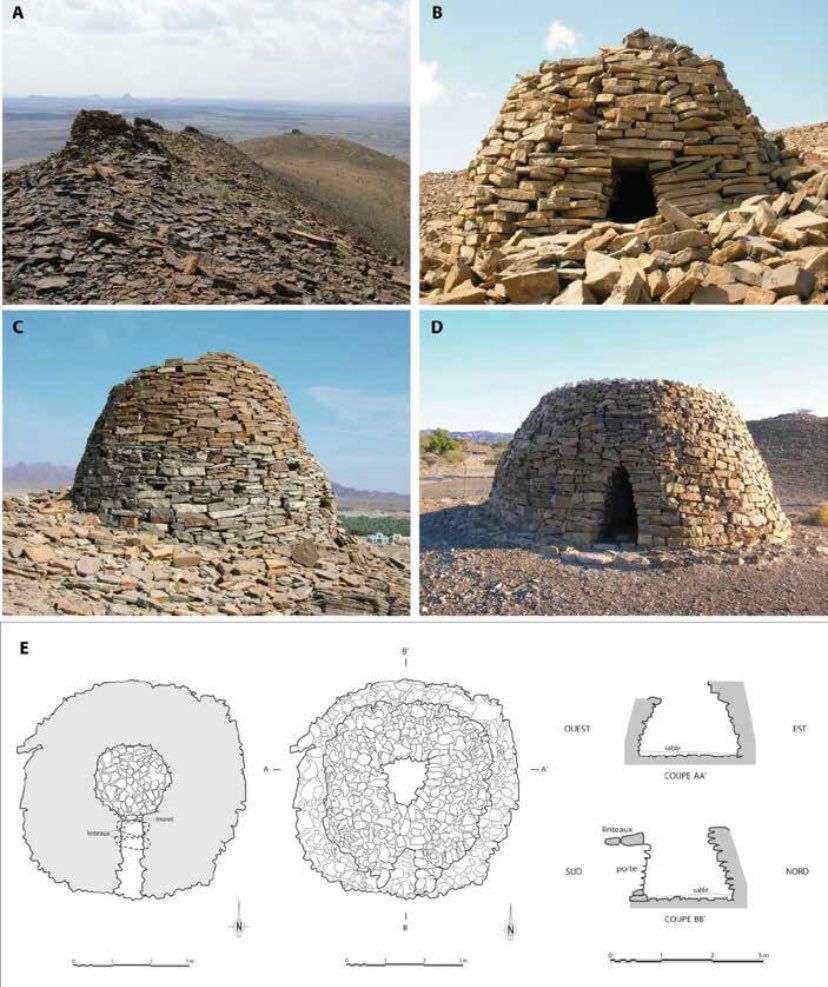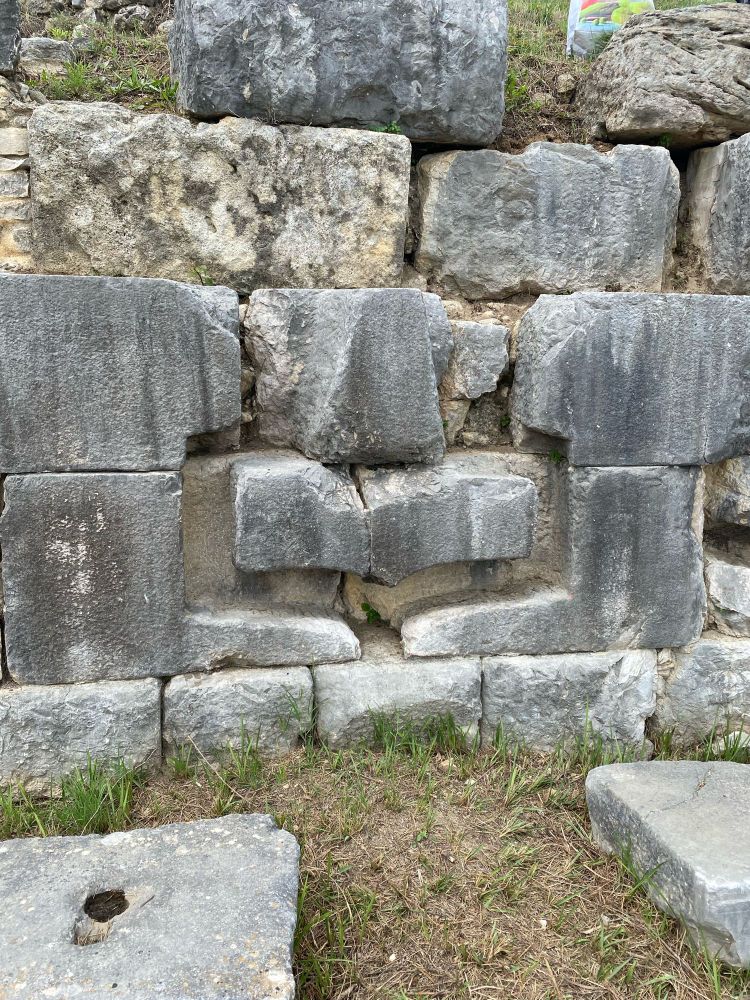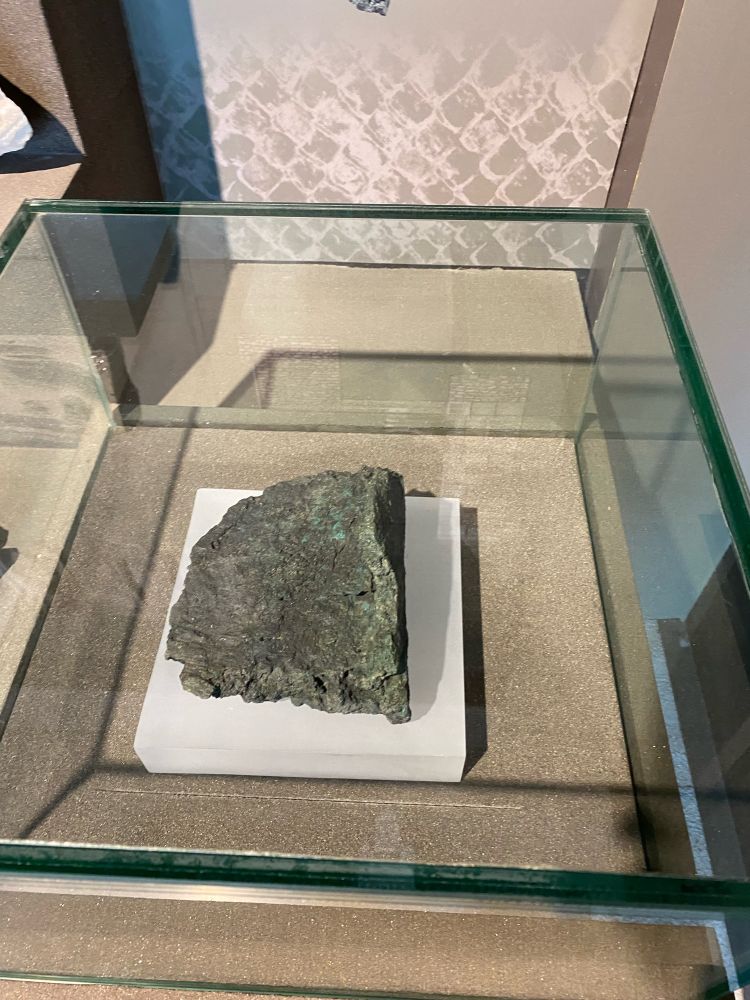
This votive statuette in a prayerful gesture was dedicated by a man from Larsa to the god Martu on behalf of the King Hammurabi of Babylon. While cast in bronze the statuette was gilded with gold, a common practice of this period.
01.01.2025 04:54 — 👍 1 🔁 0 💬 0 📌 0
…ceremonies at the nearby temple at En Gedi only 10 km away.
22.12.2024 04:34 — 👍 0 🔁 0 💬 0 📌 0

Copper scepter with Grooved Shaft Decorated in a Human Head, Nahal Mishmar, 4500-3600 BC
One of eleven objects from the so called “Cave of Treasures” to be classified as a scepter, the scepter possesses a hollow shaft in order to be placed on a wooden staff possibly to be used in religious…
22.12.2024 04:34 — 👍 1 🔁 0 💬 1 📌 0

This false door from the site of Saqqara from the Egyptian Late period (c. 6th century) bears an inscription in the Carian language which supports Herodotus’ claim that Carian and Ionian mercenaries were employed in the army of Pharaoh Psamtik I (called Psammetichus).
21.12.2024 06:06 — 👍 0 🔁 0 💬 0 📌 0

One of my favourites! A carnelian showing Odysseus tied to his ship's mast, as he endeavours to pass the Sirens: ca. 1st Century AD.
'The Sirens bewitch with their clear-toned song' (Odyssey 12.44) #AncientBluesky 🏺
Image: Berlin Antikensammlung (FG 6880). Link - recherche.smb.museum/detail/690597
19.12.2024 13:42 — 👍 110 🔁 34 💬 5 📌 3

Ostracon with a child’s drawing of people from Athribis, Lower Egypt, 100 BC-AD 200
09.12.2024 07:03 — 👍 3 🔁 0 💬 0 📌 0

Funerary scene on a limestone ostracon with mourners and a burial chamber, Egyptian, New Kingdom,
The burial shaft resembles those from Deir el-Medina in plan. One of the party wears a jackal mask possibly as a stand in of Anubis or Anubis himself.
08.12.2024 21:50 — 👍 3 🔁 0 💬 0 📌 0

Minoan clay house model from Archanes, Middle IIIA c. 1700 BC
This model resembles fresco depictions found at Akrotiri of two story residential structures.
08.12.2024 18:12 — 👍 3 🔁 1 💬 0 📌 0

Middle Assyrian sickle sword bearing the inscription: "Palace of Adad-nirari, king of the universe, son of Arik-den-ili, king of Assyria, son of Enlil-nirari, king of Assyria” This sort of bent sword was used as a mark of authority in Mesopotamian art from the Early Dynastic Period onwards.
04.12.2024 19:58 — 👍 2 🔁 0 💬 0 📌 0

1/ In 1903, the Italian archaeologist Roberto Paribeni discovered inside an elite chamber tomb (Tomb 4) in the area of the royal Villa of Hagia Triada, Crete, one of the most important artifacts of Aegean art: the Hagia Triada sarcophagus. It is dated to around 1400 BC.
#Minoans #Myceneans
01.12.2024 06:10 — 👍 15 🔁 6 💬 1 📌 0

Imitation scarab bead with native gulf stylistic elements in the Dilmun seal tradition, Failaka island, Kuwait
27.11.2024 01:31 — 👍 3 🔁 1 💬 0 📌 0

Syrian style cylinder seal impression from Avaris (modern Tell ed-Dab’a), Middle Bronze Age
26.11.2024 06:05 — 👍 3 🔁 0 💬 0 📌 0

One armed anchor found on the shores of the Dead Sea dated to the 7th century BC
The anchor is made of an acacia wood crock lashed with palm fiber rope to a limestone stock. The anchor lacks parallels in any other location and thus is likely indicative of a local tradition.
25.11.2024 05:24 — 👍 2 🔁 0 💬 0 📌 0

Fragment of a boat model from Tell Ishchali dated to the Old Babylonian period
The fragment depicts the stern of a wooden vessel with framing and keelson or central timber.
24.11.2024 05:53 — 👍 1 🔁 0 💬 0 📌 0

Hafit-type beehive tombs in modern Oman and UAE (3100-2700 BC)
23.11.2024 21:22 — 👍 3 🔁 0 💬 0 📌 0

Statue of Iddi-ilum (21st century BC) with the inscription:
“Iddi-ilum, shakkanakku of Mari, for the goddess Ishtar dedicated a statue of himself. As for the one who removes this inscription, may the goddess Ishtar destroy his progeny.”
23.11.2024 18:14 — 👍 6 🔁 1 💬 0 📌 0


Diorite head of a ruler from Alalakh (Tell Achana), level VII, c. 19-17th century BC
The head probably depicts Yarim-Lim of Alalakh which Leonard Woolley mistook for the ruler of Yamhad of the same name. (Picture from Beyond Babylon by Joan Aruz; Kim Benzel; Jean M. Evans)
22.11.2024 03:29 — 👍 2 🔁 0 💬 0 📌 0


Ubaid period “censer” found at the site of Eridu in Temple VI
The true function of these is to hold a smaller vessel that sat on top containing the incense. Many of these were found in the temples of later periods. All examples have fenestrations suggesting it may represent a building.
20.11.2024 01:27 — 👍 2 🔁 0 💬 0 📌 0

Bronze counterweight for a steelyard from the 7th century AD Yassiada shipwreck (Turkey) in the shape of a helmeted Athena with a gorgon depicted on her breastplate
This is one of the latest depictions of a god from the Greek Pantheon well into the Christian period.
19.11.2024 23:20 — 👍 4 🔁 0 💬 0 📌 0

Steatite cylinder seal depicting a warrior holding a head stuck on a pike, Minet el-Beida, kingdom of Ugarit (Syria), 14th-13th century BC
18.11.2024 15:28 — 👍 1 🔁 0 💬 0 📌 0

This inscription (c. 700-650 BC) discovered at Ekron was the first text identified with the Philistines and was written in Phoenician. The text dedicates the construction of a temple by Achish to pt[ ]yh which may be the name of Baal’s daughter, Pidray.
17.11.2024 15:28 — 👍 3 🔁 0 💬 0 📌 0

The site of Mushiston in modern Tajikistan is home to ancient mines whose earliest phase is from 2400-1900 BC and contains ceramics associated with the Andronovo Culture. Tin associated with sites like this fueled the bronze making of the Near East.
16.11.2024 22:20 — 👍 3 🔁 0 💬 0 📌 0

In his Deipnosophists, Athenaeus notes that rhyta shaped like triremes were used by various people, including the Athenian comic poet Epinicus, and these trireme rhyta were intended to be humorous. There are a few that still exist today!
15.11.2024 23:12 — 👍 6 🔁 2 💬 1 📌 0

Old Babylonian limestone basin (c.1800 BC) decorated around the exterior in carved bas relief with scenes of warriors fighting a lion, Nineveh
15.11.2024 00:38 — 👍 3 🔁 0 💬 0 📌 0

What was the largest naval cast in antiquity?
Some would think the rams on the largest polyremes, including the “twenty”, “thirty”, and “forty”, would have the largest rams. However, they would have had smaller rams than their increasing class size would indicate.
14.11.2024 08:23 — 👍 10 🔁 3 💬 2 📌 0

Etruscan Square Tomb, Cerveteri
📸 Johnbod (CC BY-SA)
Cerveteri (Etruscan name: Cisra or Caisra, Roman: Caere) was an important #Etruscan town which flourished between the 7th and 4th century BCE.
#Archaeology #History
🏺 AncientBlueSky
14.11.2024 19:21 — 👍 36 🔁 8 💬 0 📌 0

“Probably, too, all the ancient money was of this sort, some peoples using iron spits for coins…pieces of money retain the name of "oboli," or spits, and six "oboli" make a "drachma," or handful, since that was as many as the hand could grasp.” (Plutarch, Lysander 17.3)
14.11.2024 01:42 — 👍 1 🔁 0 💬 0 📌 0

Spherical and sphendonoid shaped pan balance weights found as a part of the assemblage from the Cape Gelidonya Wreck c.1200 BC
Most weights are based on a measurement of 9.3g which roughly corresponds with the Ugaritic “light” shekel or the Egyptian qedet.
13.11.2024 18:51 — 👍 0 🔁 0 💬 0 📌 0
Ancient history and lit, photos of my cats. Writer, reader, fantasy, sci-fi, 🏳️🌈Ally, No🚫GenAI content. Lawyer by day.
Probably followed you for mentioning reading, history, or writing in your profile.
"Armchair Classicist: The Page" on FB
Hello, classics graduate - I’m interested in classics, the middle ages, history in general and art. Also, rabbits. Currently reacquainting myself with Latin via Virgil, Ovid, Juvenal, Tibullus and Catullus.
“Sarcastic Brit” - the Guardian
An extensive collection of information covering all historical states, with comprehensive features, detailed maps, and lists of rulers for each state. Contributors welcomed with nerdish enthusiasm.
Located in London (UK), Edmonton (AB), & Atlanta (GA).
᚛ᚐᚔᚇᚐᚌᚅᚔ᚜
Explorations of Etymology / Historical Linguistics. Usually on Fridays.
www.aidanem.com
Tips: https://ko-fi.com/aidanem
Subscription: https://www.patreon.com/aidanem
We are 4,000 archaeologists from over 60 countries.
Tweets by volunteers, not 24/7.
Find us here: https://www.e-a-a.org/
e: helpdesk@e-a-a.org
Archaeologist | Permanent Representative of the Director, Archäologisches Landesmuseum Baden-Württemberg | Adjunct lecturer State Academy of Fine Arts Stuttgart | Private account, views are mine 🖖
📚 Enthusiast of the prehistoric civilizations of the Aegean and Greek protohistory.
🔎 Mycenaeans, Minoans, Aegean Scripts, but also Greek Early Iron Age.
🌐 https://x.com/hermahai
Classicist, archaeologist, sci-fi and horror nerd and, most importantly, ginger. Oh, and... "Ph'nglui mglw'nafh Cthulhu R'lyeh wgah'nagl fhtagn". #EdgyPedlar #AncientStuff
#Roman & conflict archaeologist; Lecturer in Ancient History at Manchester Met University; University Teacher at the University of Liverpool; Early Career Research Fellow at the Centre for Integrative Research in Conflict Archaeology.
#Archaeology, #Ancient #Classical World & #Roman Frontier Studies MA. Former life Archaeologist doing a bit now and then. Every day above ground is a good day! Romanes eunt domus!😂
http://www.roamintheempire.com/
Archaeological travels through the Roman Empire. Bimonthy updates at the website. All photos my own unless otherwise noted.
Nautical Archaeologist & Ancient Historian • Greek & Roman Maritime History & Archaeology • Naval Warfare, Warships, & Naval Rams • Postdoc Research Fellow at Dalian University of Technology (DUT), China • PhD from TAMU.
http://stephendecasien.com




































